A few years ago, I changed my basic operating basis. I COULD continue to be the farmer all winter but that was becoming more difficult. With my old process I was running into not being able to come up with enough beef when I needed it. My old process also didn’t seem very efficient. In any business that sells things, the owner wants to keep inventory moving. The less time his inventory spends on the shelves, the better. I realized that I was making most of my living by doing the sales and logistics work for other farms as well as myself so I decided I should play to those strengths. I did some research and changed things up.
I should go into my old operating basis a bit. It takes 2.5 to 3 years for a Grassfed beef animal to grow from a baby calf to the age and size where it makes sense to harvest them and turn them into food. The baby calf is born in the spring of year 1. He grows up to weigh about 5 hundred pounds by the end of year 1. In year 2 he grows another 4 or 5 hundred pounds and gets up to about 1100 pounds. The animal is still too young and small to be harvested. At that stage, we called them ‘long yearlings’. At that young age the animal’s body hasn’t really finished growing so most of what he eats goes to frame and there isn’t a lot of fat or marbling on a young animal’s carcass.
My Pa always used to not like Holstein steers because it took them so long to get through that young gangly stage. He said that they were a ‘big empty barn’ for the first three years of their life. After that they would get muscular and then fat. A long yearling steer is like that, a big empty barn. Not nearly as bad as a Holstein but the concept is similar.
An aside: I once looked at a couple of Holstein steers who were about 5 years old and were an old farmer’s pets. He said he wanted to send them to town (harvest them) but when push came to shove, he kept them and bought another winter’s worth of hay for them. They were still there when he died but I didn’t get them even then. Somebody else beat me to the punch. They were absolutely huge. They were almost as tall as me at the shoulder and I am 6’2”. A usual beef steer is ‘big’ when he is about 5 feet tall at the shoulder. They had horns about a foot long and looked about 4 feet wide across the chest. They would come up to be petted and have their heads scratched. Total pets. They would have had TBone Steaks bigger than a normal plate. They would have had Ribeye steaks as big as a normal plate. Their briskets were huge and fat, their tail heads were full of fat. They would have made excellent steaks. They would have also made tremendous Oxen but they also would have eaten a huge amount of food just keeping that big body alive so maybe that wasn’t such a good idea after all. They did make good pets for an old farmer though. Gave him something to do that probably kept him going for an extra year or two.
Back to the subject at hand… The steer stays around for a second winter and then spends the final summer growing the last bit of muscle and getting fat. The upshot of all of this is that it takes not quite 3 years to produce a grass fed beef animal.
Let’s do a little math: If it takes 3 years for an animal to grow, and I have space for 63 head of cattle on my farm every year, that means I can only harvest about 21 head of cattle per year on my farm. There are ways of increasing the productivity of the land but that is a different post. Note that this is an over-simplified way of looking at things because half of the calves are heifers and I would always want to keep some of them as replacements or to grow the herd, etc. The upshot of it all was that I would wind up with 10 to 15 head for processing and keep as many heifers as I could in order to grow the herd.
We were producing those 15 head and also buying some fat grass fed cattle from other farmers. Since we were going through 30 to 40 head per year I spent a lot of time looking for other grass farmers, handling logistics of getting them to the processor on time, etc.
Here was my BASIC new plan:
1. Buy cattle in the spring.
2. Fatten them all summer long.
3. Process them in the fall.
4. Don’t keep any cattle on the farm over winter.
When I changed things so I was just keeping the cattle around the place for their final summer, I was now able to produce the whole farm’s worth of 63 head of cattle for processing here on my own farm. I could make sure they were all treated well etc. I was the grass finisher and my outlying farmers were getting them ready for me.
There were still hills to climb though. Those hills will come up pretty quickly as I go through my plan.
1. Buy cattle in the spring.
Buying those cattle every spring is not cheap. My solution as that like most farmers, I got a line of credit and bought them. I have been buying as many as I could scrounge up money for and then still buying some more from my ‘stable’ of farmers later in the year.
Like with most things, this plan is changing as I go forward. One of the farmers I have been dealing with for years has about 50 cows of his own. He makes hay on the side. He sells the summer calves every fall and keeps his cows over winter so they have another set of calves in the spring. He usually has a lot of hay. This year was a bumper crop year for hay so he has a super abundance of it. He is willing to keep some cows over winter for me. Yay! I won’t have to run around like a headless chicken in the spring looking for cattle. I can build up my herd during the fall and winter and he will feed them along with his own cattle all winter long. He will of course charge me for keeping those cattle. I think this will work better than my needing to feed them all winter long myself. I won’t worry about them while we are doing deliveries to Chicago. I won’t have to figure out where to keep them in a spot where they can get water as well as food. I won’t have to schedule feeding them around the winter storms and bitter cold. My tractor hydraulics don’t work when it gets below about 5 degrees F. I used to schedule things around the weather as well as leaving them for a few days to do a delivery.
2. Fatten them all summer long.
The cattle I have been buying in the spring are usually ‘open’ cows. That means that they haven’t had a calf and the farmer doesn’t want to keep them around any longer. They are also thinner in the spring than they are in the fall just because hay isn’t as nutritious as green grass and the weather is obviously more harsh during winter. The upshot is they lose weight during the winter.
I get them in the spring as somewhat thin cattle and put them on my lush grass all summer. This works well because a cow has evolved to have a calf every spring and eat enough to feed that calf as well as add fat onto her body. She uses that fat she puts on her body to live through the upcoming winter. This means that a cow can gain a LOT of weight in a short amount of time if she is not feeding a calf.
Here are some cattle when we got them in May. Pretty skinny and gaunt looking:
This black one still has some of it’s winter coat on.
Here are a few from that same batch of cattle taken a few days ago. They look a lot more like sausages:
As you can see there is a BIG difference between those two time period photos. I am definitely sold on this operating basis of producing beef. As long as I have other grass farmers willing to sell me cattle so I can do the grass finishing part, things should be good.
3. Process them in the fall.
We have started with the processing already this year. So far, 10 head have gone to processing. We usually pick the best ones and send them earlier. Sometimes there is one that just isn’t doing as well as we expect so we send them and turn them directly into ground beef since their quality isn’t good enough to make steaks yet. They might make steaks by the end of the growing season in November but we need extra ground beef anyway so out they go.
Around this time I start dealing with my outlying farmers, picking up any animals they might have, getting them scheduled with he butcher and seeing they get there in a timely fashion. For instance, I currently have 2 head from one guy, 6 head from another guy, 3 head from a third guy and 4 to 8 head from another guy. Of course there is a lot more work to be done on all of these before they are all finalized. I need to go see them, make sure the farmers are all still doing only grass, etc.
4. Don’t keep any cattle on the farm over winter.
When winter comes, I spend my time making firewood and clearing brush for more pasture. I also spend a lot of time doing promotional actions on the computer, writing things and lining up what is going to happen the next summer. In truth, there is a not a lot of ‘outside’ work that gets done either in the winter or the summer just due to the demands of running all the logistics of the the meat business. My definition of logistics is all the lining up of slaughter dates, finding cattle, picking up meat, stashing meat in freezers, filling orders, handling email, driving to do deliveries, etc.
No worries.
SV

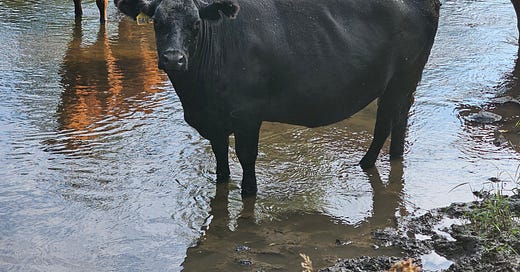


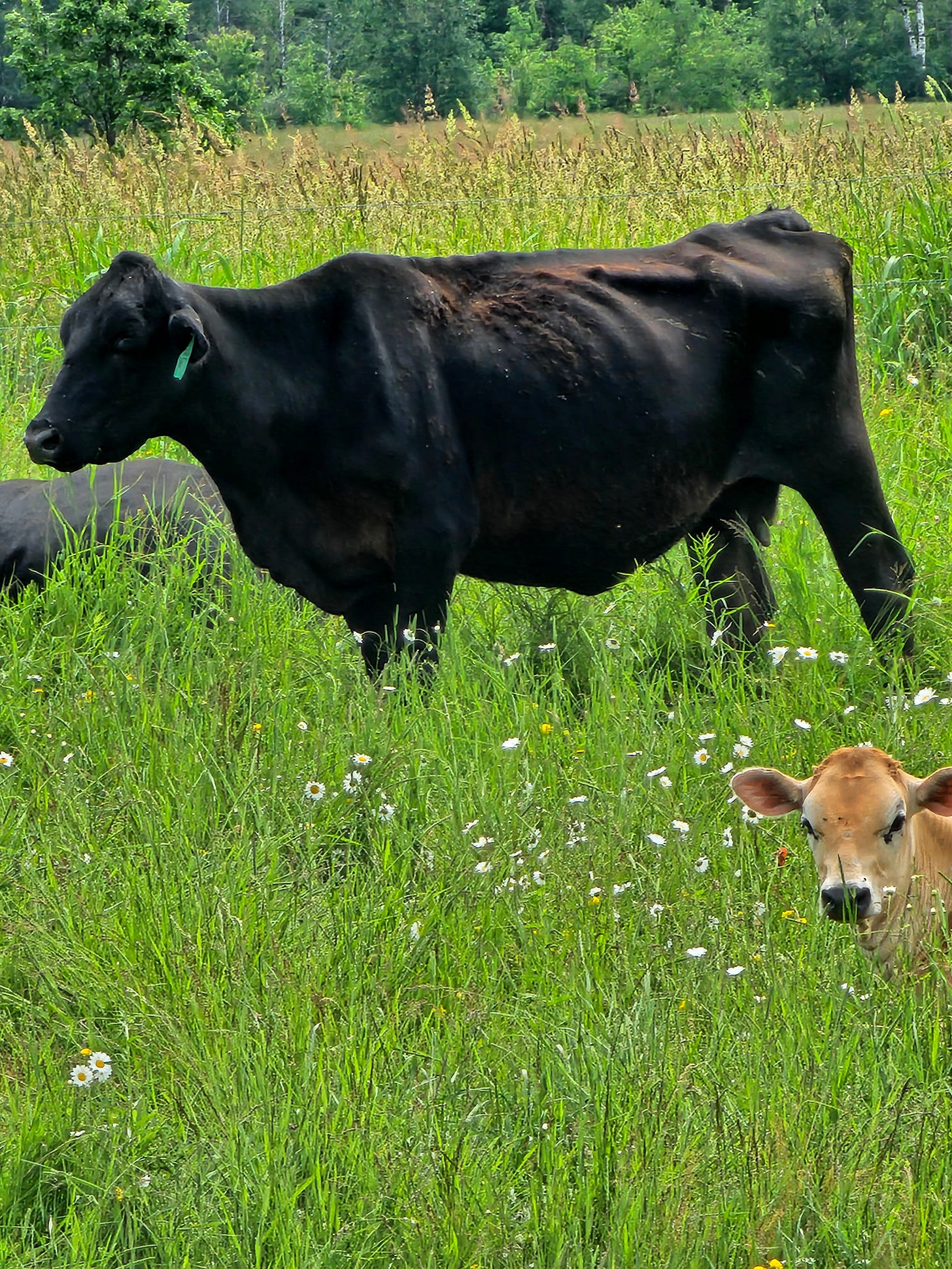
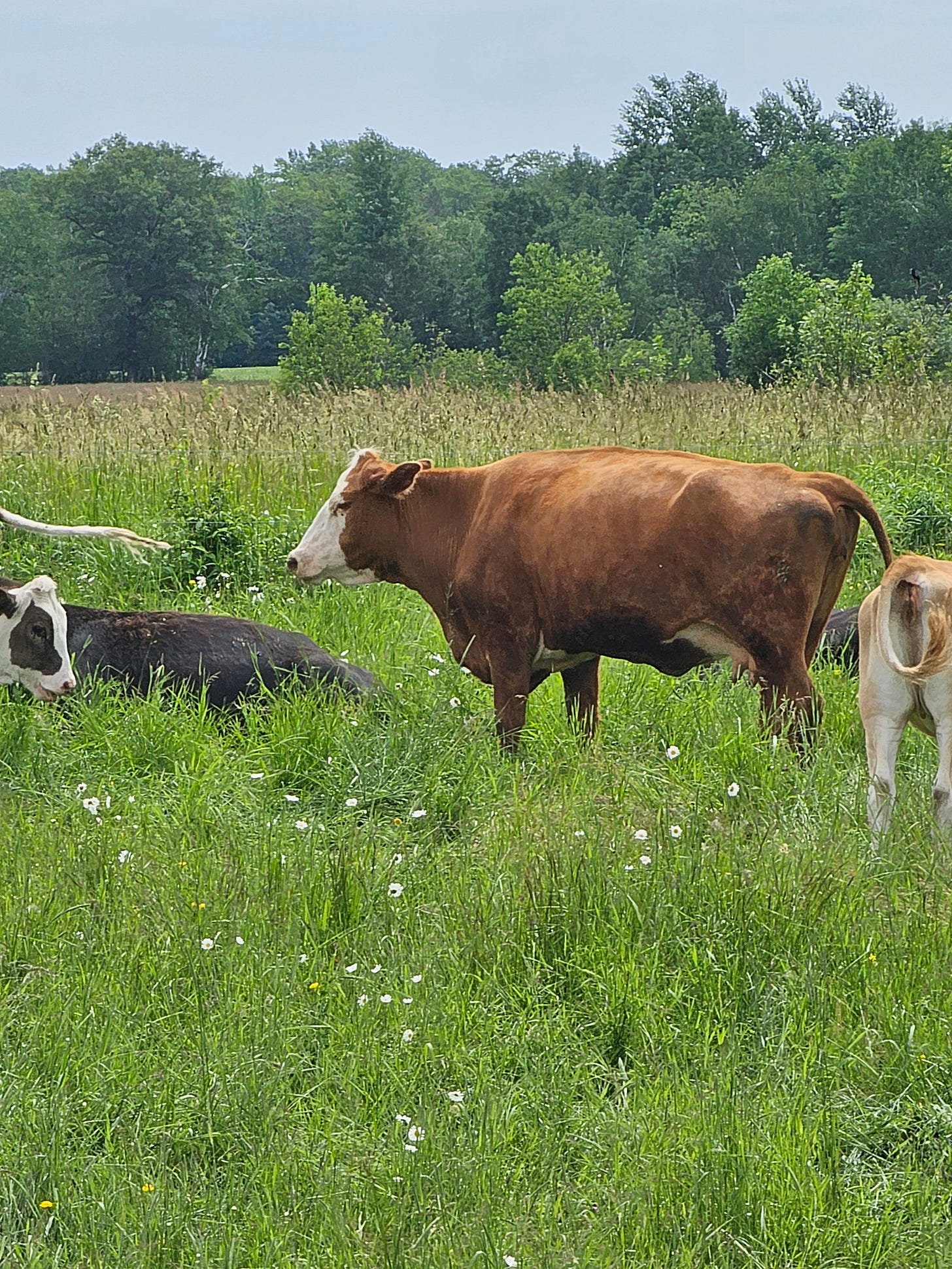
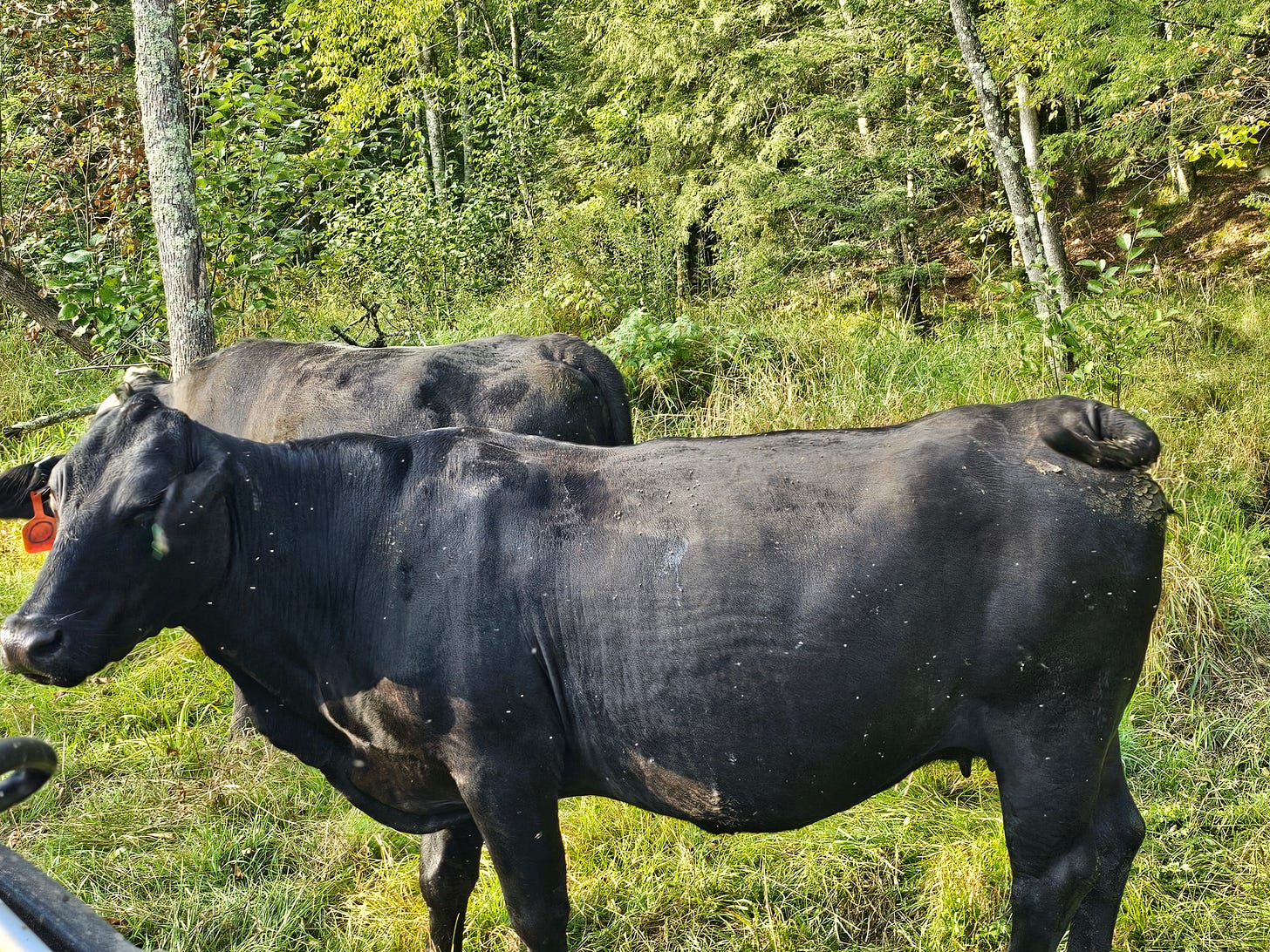
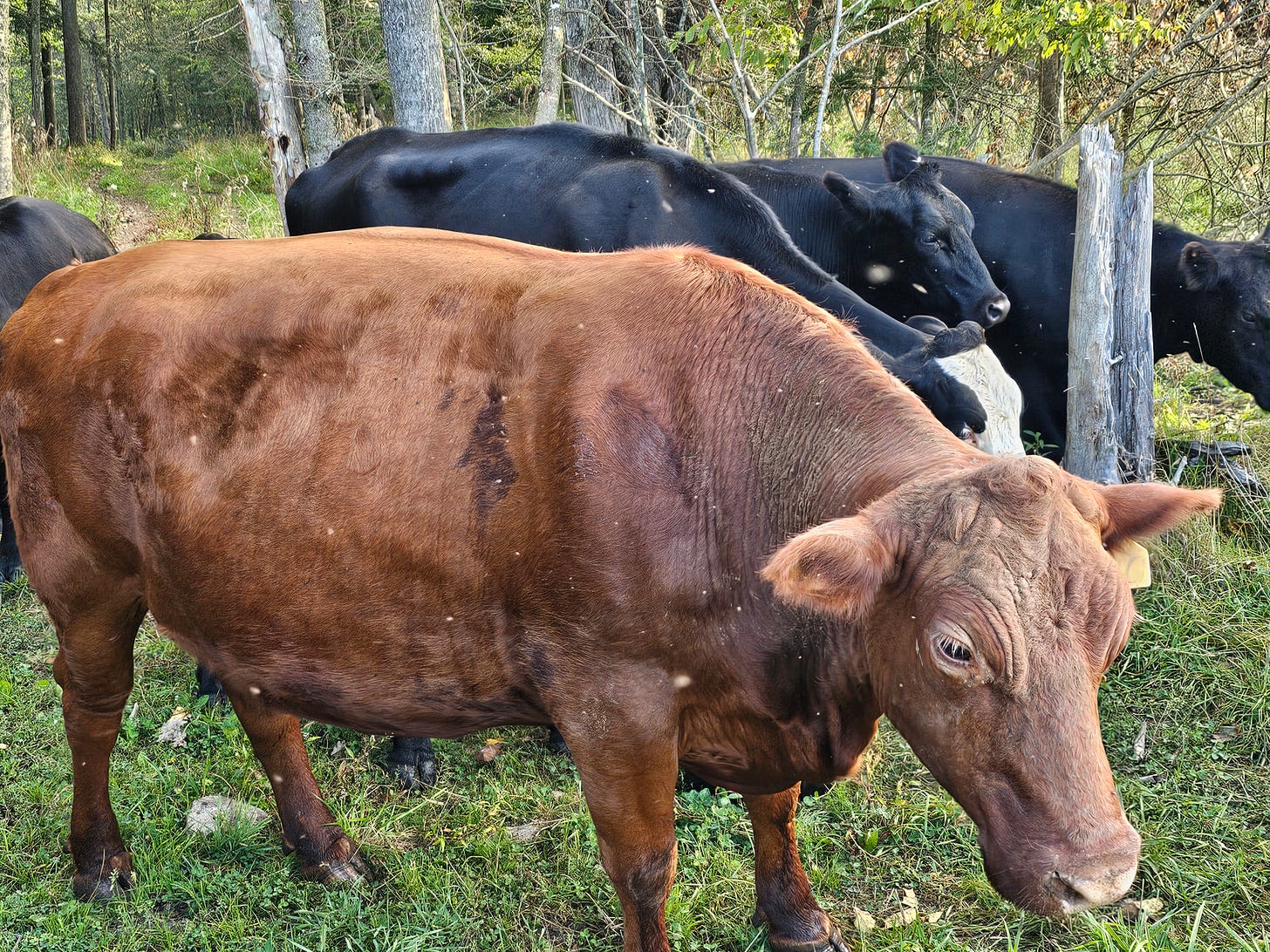
It sounds like you have become prudent over time and with experience. Bravo!
I have a question about the manner in which the animals are slaughtered. I read that there are humane ways to slaughter (fewer animals at a time and shorter wait periods - no cramming in corrals and then pushing through scared and confused animals quickly that can result in greater errors and more suffering for the animal.)
Next post could you address this issue of your animals’ “final moments” please?